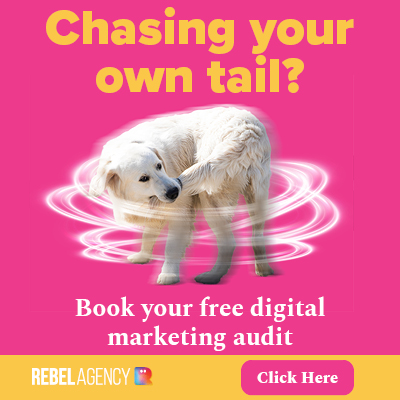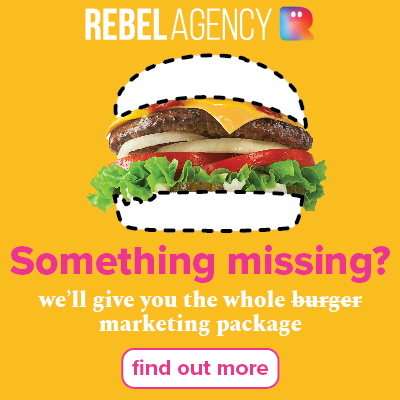How far we scroll each day depends on who you ask. Estimates range from 30 metres to 100 metres each day. That’s a lot of scrolling!
In the past, we used the back and forward buttons almost exclusively to navigate around websites, now with increased mobile usage, more businesses are relying on scrollable websites to make them more friendly for mobile users.
So if we’re scrolling up to 100 metres a day across our social media platforms, news feeds, messages and texts, how do we get your message to stand out?
In the past, we used the back and forward buttons almost exclusively to navigate around websites, now with increased mobile usage, more businesses are relying on scrollable websites to make them more friendly for mobile users.
So if we’re scrolling up to 100 metres a day across our social media platforms, news feeds, messages and texts, how do we get your message to stand out?
Marketing experts recognise that Thumb Stopping Content Marketing is becoming increasingly important for business. In the past, marketers have been content with targeting to drive their audience engagement, but now we can’t just focus on that only. Why? Because we need to ‘connect’ or engage with our audience and the only way to do that is to cut through the noise.
If you’ve visited Ho Chi Min City, you’ll know that with 8.5 million people and as many retail outlets each business tries to usurp their competitors with large lighting displays and movement to attract customers.
The technique works, until your competitors start doing it too, then it becomes a competition that only the biggest or the person with the biggest purse will win.
Use these tips to save money and be clever with your social media marketing to maximise engagement with your customers.
Understand your customer’s needs and sell the end result

It’s really important to identify what your customer’s need is and then show them how to achieve the end result. Create the ‘imagine’scenario where your customers actually see themselves in the ‘after state’. This is why weight loss companies use before and after photos and focus on the perfect life their clients enjoy once they have lost weight. Gyms don’t show overweight people struggling and sweating to lose kilos and no one wants to see needles in acupuncture advertising!
You’re the person that understands the benefits of your product or service because you’re the one selling it. Right? But do you understand what your product means to your customer?
For example, a family in the market for a washing machine understands that they need to look at the size, water and energy rating of the machine, but what you should really be selling is the fact that if they buy a 10 kilo capacity washer, you can do twice the washing of a 5 kilo machine in half the time. Think about it. You’re giving back the home maker hours of time to do what they really want to do.
What would you prefer to do? Do 10 loads of washing at an hour each or do five loads of washing at an hour each? You’ve just given them five hours of family time! Take the benefit and make it ‘real’for the client.
Use Stories to engage your customers

Story telling is becoming increasingly important in relaying information to people. It’s a style of communication that relates the solution to a problem that is shared with other customers in the form of a story.
A gym would use the story of a client that was struggling to get back to her pre-baby weight after having her second child. It would relay that customer’s journey to show that it can be done. This is important social proof for your business because it shows real people overcoming real objections or hurdles. Story telling is a valuable sales tool in face to face sales, used as the basis for blogs, social proof videos and in your business marketing.
Consumers want to hear and see real stories about real people.
Again, you need to understand the customer needs and objections before you can tell a story that gives them a solution. Often when you are buying a product, a good salesperson will relate the story of a similar customer who had the same problem that you have and how that product has helped them. People are confronted with so many sales messages each day that they have become complacent about staged campaigns, videos and tvc’s involving actors.
Use movement to stop the thumb scrolling

Video has become an important component of social media advertising and even electronic direct mail. Many of us have 100’s of connections on Facebook and Instagram, some 1000’s, so you’re not going to have time to stop and look at every post that appears in your feed, let alone see the ads that Facebook throws your way. Whether movement is in the form of a Gif short video file) or a longer video about the benefits of your products or services, its more important than ever before to implement some form of Thumb Stopping Content Marketing into your social media advertising.
Traditional media like newspaper and magazine advertising use size and colour to create an eye-catching display for consumers, television advertising has been relegated to fast forward and consumers of this type of advertising are having to come up with new ways to stop watchers from fast forwarding through the ad breaks.
Creating movement will help stop the scrolling, but once you have caught the consumers attention you’ve got to engage them. Your content is so important to moving them on to the next stage of your sales funnel.
So before you do any marketing, you need to really understand these three points and work out how you can maximise engagement with your customers.
At Rebel Digital our team make video everyday for our clients, from ‘how to’ to ‘social proof’ (testimonial) and brand videos for social media and websites.
Right now we’re offering a free Business Facebook Video Cover Page with every brand video we do, so contact us now for pricing and don’t miss out on this special offer.





